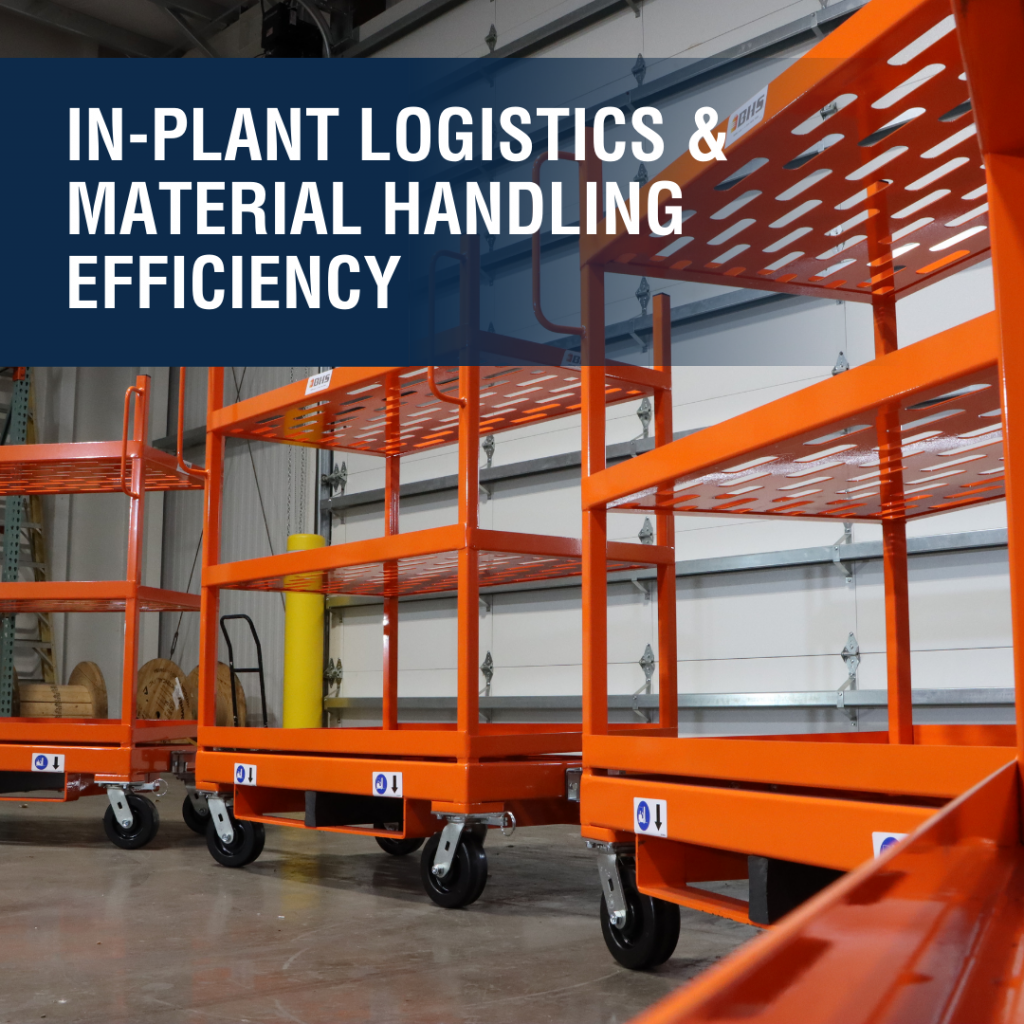We use cookies to make your experience better. To comply with the new e-Privacy directive, we need to ask for your consent to set the cookies. Learn more.
In-Plant Logistics and Material Handling Efficiency
The discipline of logistics is concerned with the whole process of managing, storing, and transporting products and materials. In-plant logistics refers to the same thing, but within a single manufacturing facility, not across global trade routes. Don’t be fooled by the smaller scale, though: in-plant logistics is just as crucial to manufacturing productivity as the broader supply chain. Think of it as the last quarter mile, or even the last few feet, of material delivery.

The fact is, raw materials, components, and assemblies don’t produce value until they reach the manufacturing line. In-plant logistics is about the final step in that journey, and it’s crucial to get this last step right. If you consistently delay production because of shortages — or if your storage areas are overflowing with too much of a rarely needed material — it’s probably time to revisit your internal logistics processes. Start your review by looking into three distinct areas of any in-plant logistics system:
1. Material Flow Strategy and Planning
Line-feeding plans don’t need to be complicated to be effective. But they do need to take into account the physical and procedural realities of the individual plant. Is there space for storage near or, better yet, at the point of use? Do you need to inspect or kit out materials before sending them to the line? These considerations will help determine the strategy that provides the most efficient throughput for a given operation. Whatever the plan looks like, however, the key thing is to have a plan in the first place. That could entail kitting (delivering materials as “kits” of related components), continuous supply (in which bins at the point of use are continually replenished by the store team), batch supply (providing just the necessary materials for a given production goal), or another strategy entirely.
2. Information Systems for In-Plant Logistics
The rise of Industry 4.0 technologies — the Industrial Internet of Things, advanced materials tracking, enterprise resource planning (ERP) platforms, and digital automation — allows today’s manufacturers to take a data-driven approach to in-plant logistics. This digital infrastructure is a key component of total line-feeding or material-flow systems within manufacturing operations. The gold standard of tracking, routing, and restocking materials is the Plan for Every Part, or PFEP, strategy, in which users track key information for every part or load of materials. Learn more about PFEP material flow here.
3. Physical Material Handling Systems
So far, we’ve covered the intangible elements of an in-plant logistics system, but you must also physically move components from storage into production. Automation is disrupting traditional material handling systems, and may provide great efficiency gains for many. But as the Indian Institute of Materials Management states, “Automation in storage and handling is very useful, but automation for its own sake can be counter-productive. The equipment required needs to be based on the needs of the activity.”
The key is to provide material handling staff with standardized equipment designed specifically for handling the most common parts and materials. That could include steel Material Carts for large and bulky components, Stock Picking Carts for smaller, unpalletized loads, or even an electric tugger and Warehouse Trailers to create a line-feeding train.
Material handling equipment from BHS, Inc. is designed specifically for tough industrial environments, with welded steel construction, chemical-resistant powder coatings, and customizable features to match any use case. To learn more about how BHS can help your in-plant logistics system run more efficiently, or to discuss a custom material handling project, call our sales team at 1.800.BHS.9500.
